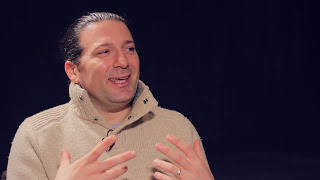Transcript:
Erik Michielsen: What has your corporate work taught you about innovation needs in human resources?
Jullien Gordon: Innovation has always been focused on the machine and the product, and how we deliver that service. And where I see that connecting with human resources, that innovation is really about how we manage, retain and grow our people now. Because everybody can replicate your technology now, they can get your product, dissect it, see what you did, and replicate that in a month now, right? So really the innovation, which can’t be replicated as easily, is your human capital. And so that’s where I’ve seen it connecting, and that the organizations that are committed to innovating around the way that they work with their human capital are the ones that are winning. You look at Zappos for example. You look at Southwest for example. All of these places are known for their great organizational culture and that’s why they have dominated their industries over the past few years.
Erik Michielsen: How do you start that conversation with the senior HR leader about making those changes to stay ahead of the curve?
Jullien Gordon: So the first question that I ask HR professionals is: Do you know who’s on your team? When you interviewed them, you got information about them in terms of their résumés, their past accomplishments, where they were educated, but now it’s six months in or a year in or 18 months in, and do you still know who that person is? We, as human beings, are evolving so quickly in this day and age that this person may have gotten married, like myself. They may have kids. And their original intention for coming to your organization may have changed. When they originally came to your organization, it may have been to pay off their student loans, it may have been for leadership opportunities and travel opportunities, then all of a sudden, life has occurred for them, and now their top priorities are no longer those three things, they’re actually mentorship, flexibility, and… certain types of projects, right? But if we never stop and ask those questions, then we are developing our human capital strategy based on who we hired 18 months ago, not who we have on our team today.
And so I help organizations close the gap between what their employees really want and expect from their employer, and their current human capital strategy. And I do that through my process called “innerviewing.” We all know what an interview is. That’s how you get the job. But innerviewing is a constant process of going back to your team and asking the right questions. What do they expect from work? Why are they even at this company? Because we don’t even ask that in the interview, we assume that we know the answer because they accepted the job offer. And then we’re also asking them, how do they define success? And is this company helping them achieve their definition of success? That’s the greatest employee retention strategy of all time, is to help them achieve their definition of success.
Now, a company may say, I do that by giving them a bonus, or higher pay, and then they can take that money and do what they want to create the life that they want outside of the work space, but I find that, for this generation, they don’t just want money, they also want to make meaning and because we spend so much time in our work environment, that has to be a space that’s fulfilling and engaging, and so when you ask somebody what’s their definition of success, and you ask them how their work actually fits in to that, you find that if you’re helping them achieve their definition of success, not just at work but in their life in general, then it’s gonna be harder for them to leave because it’s happening for them here through you and your organization.
And so, again, the question is, who’s on your team, or do you even know who’s on your team? Yeah, you hired them this long ago, but do you know who’s on your team right now? Do you know what their definition of success is? Do you know what their expectations are of work? And do you even know why they work beyond just money? And if you actually get answers to those three questions, I think you’ll find information that you can use to close the gap between what your employees really want and your human capital strategy.
And the reason I’m so important in doing this work is because oftentimes HR may send out a survey, and a survey already has bias in it based on who wrote the survey. And then some HR organizations are—or departments say that they’ve done focus groups. Well, I’ve found that anonymity is actually the best way to get the most authentic answers from employees, and so that’s where I go in to organizations. I actually go in, ask the high performers these core questions, take those insights and then help the organization close the gap between what their high performers that they want to retain really want and their human capital strategy.























